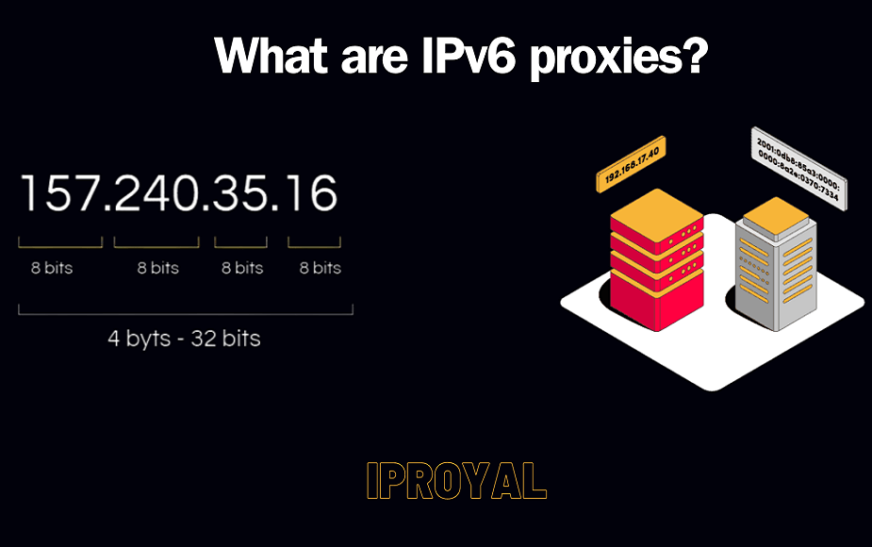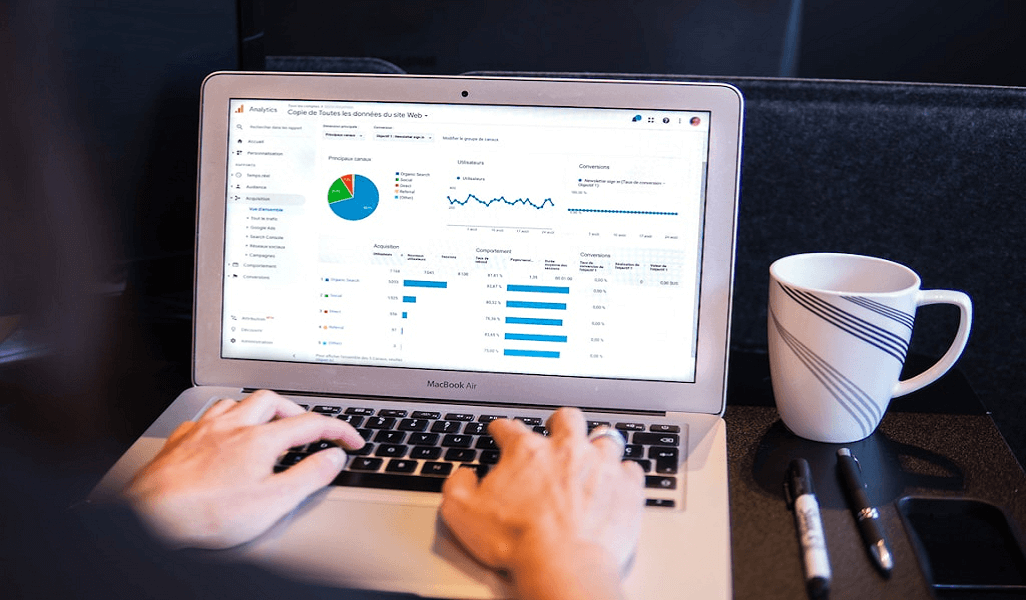If you are one of those who always look for the newest and shinest innovations, IPv6 proxies might have caught your eye. As with all proxy innovations, providers are quick to market them as complete game changers.
But switching from your ordinary IPv4 proxies might be expensive and not necessarily worth it in all scenarios. This article will explain what IPv6 proxies are and answer when you should upgrade them.
What are internet protocol versions?
For our purposes, the Internet protocol is just a series of rules that define how devices communicate over the vast worldwide network called the Internet. The most important rule for us here is the requirement for every device to have a unique and credible assigned address called an IP address.
An IP address used to be just a string of letters such as this one – 01.103.102.105. When you order an internet connection to your home or a mobile device, your internet service provider (ISP) assigns such a number to your machine. No other device has the same address, which enables all other devices to identify who is connecting.
Furthermore, the IP address, thanks to the ISP who verifies it, is tied to a specific geographical location. It’s one of the most fundamental pieces of how the Internet works. No connection can be established without an IP address assigned to a device.
The IP address mentioned above is in IPV4 format. It consists of four decimal numbers ranging from 0 to 255. Its form can also be expressed more abstractly like this – x.x.x.x, where x is a value between 0 and 255.
There were other internet protocol versions, such as IPv3 and IPv2, that used different formats. But we must not bother ourselves with them as they all were quite experimental. They were mainly used by researchers and the US military.
The Internet as we know it really took off with IPv4 format. But this format, although an excellent method of naming devices, has one significant drawback – it’s very limited in variations.
There are a bit more than four billion unique variations for IPv4 addresses. It does sound like a lot, and it was back in 1980. However, the creators of the Internet couldn’t foresee how many devices would connect to the network in a couple of decades.
It took around ten years for researchers to calculate that we will run out of IPv4 addresses by the start of the next century. That’s why IPv6 was invented.
IPv6 addresses follow a format of y:y:y:y:y:y:y:y, where each segment (y) is a hexadecimal value from 0 to FFFF. Simply put, instead of 10, each character can have 16 variations. That’s why IPv6 addresses also have letters to denote the larger variations.
A typical IPv6 address looks like this – 2004:0cb8:82a3:08d3:1319:8a2e:0370:7324. It’s a much more complicated system that provides 340 undecillion addresses. It’s a ridiculously large number that is difficult to even comprehend.
Why should a proxy user care?
The IPv6 format ensures that we will never run out of IP addresses and the Internet will continue to function, at least theoretically, no matter how many devices connect. But if you are looking for an intermediary to hide your original IP and change geo-location, why should it concern you?
Blending in
In a way, proxies are a digital disguise. You simply hide your online presence with another device. Hiding yourself with an address that is novel and rarely used doesn’t sound like a good idea.
That is the case with IPv6 addresses. Only a third of devices globally are using IPV6. Naturally, it seems that you will be better hidden in a larger 70% crowd of IPv4 users. However, only a handful of providers are offering IPv6 proxies, and only some of them have the same price.
The best IPv6 proxies now are offered by IPRoyal. The cheapest ones – datacenter IPv6 proxies, cost $1.39. The most expensive residential proxies start from $1.75. Unlike other providers, they give the option to simply switch to IPv6 mode.
Not every provider is so generous, so most proxy users go with IPv4 proxies. That’s why some websites don’t even bother to check IPv6 addresses with anti-proxy or anti-bot measures. You may very well get a free section.
Additionally, IPv6 address adoption highly depends on the region. The US has almost reached 50%. So, the argument that you will stand out with IPv6 proxies doesn’t work if you use US proxies. The adoption is slower in third-world countries, and you really want to use them anyway.
IP freshness
There’s also an argument to be made about ‘IP freshness.’ Most IPv4 addresses are reused by ISPs, and proxy providers also acquire them. Only a small part of IPv4 addresses are unused, but they are reserved for governments. No way a proxy provider will get hold of them.
Therefore, no proxy seller with only IPv4 proxies on offer can be honest in claiming that their IPs are ‘fresh’ and some use cases require it. Social media management, for example, requires you to have an IP address that is not blocked on any other sites. Facebook and other platforms are known for making registries of blacked IPs.
Using an IPv6 proxy helps you to bypass these concerns. Since ISPs want to promote adoption, they are giving IPV6 addresses left and right. You can almost be sure that every IPv6 address from a trusted provider will be a new one without a history of bans.
Conclusion:
IPv6 protocol is truly groundbreaking and solves many of the issues that IPv4 was not able to solve. However, if you have already compiled a sufficient pool of IPv4 proxies, the switch is not at all necessary. The best strategy is still to look into the prices and add one or two IPv6 proxies if you find a good deal.










